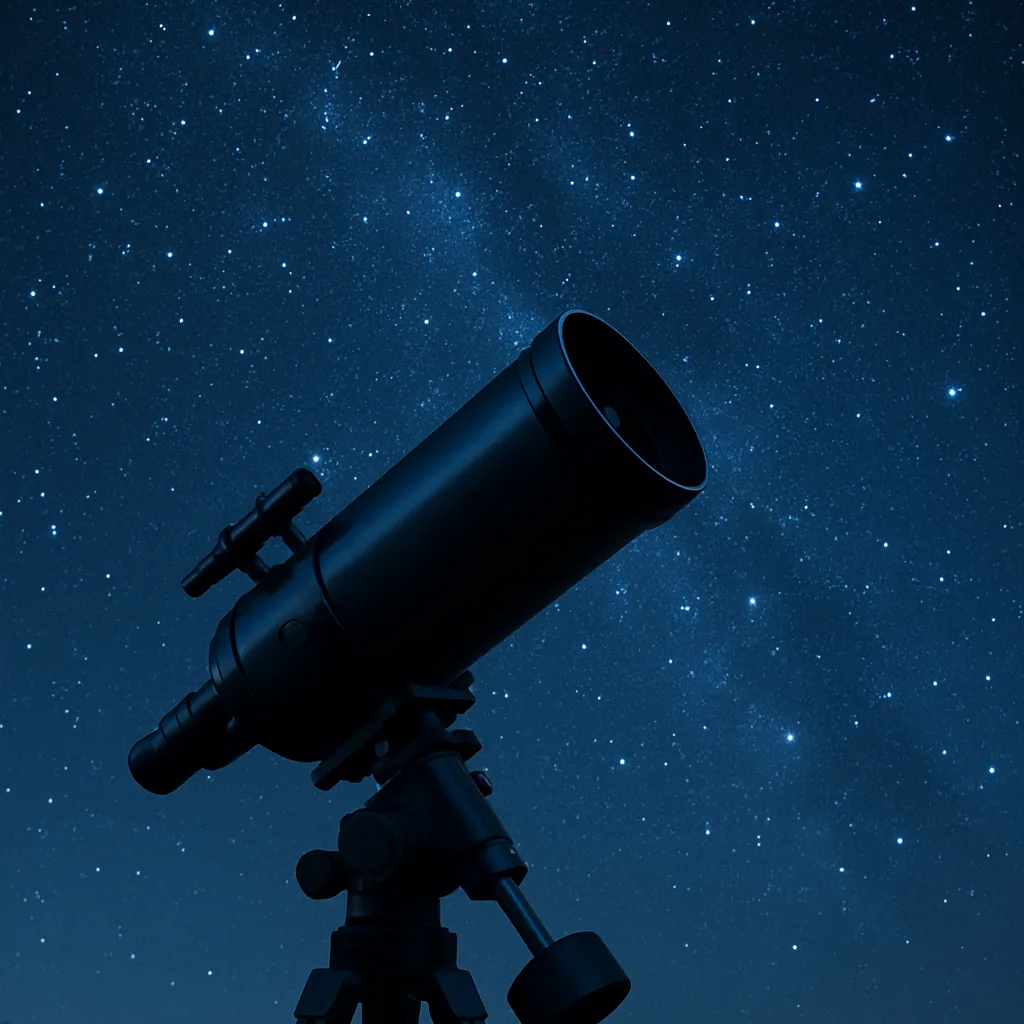Introduction
Telescopes have unveiled the universe’s secrets, from distant galaxies to nearby asteroids, sparking wonder about our place in the cosmos. Who invented the telescope? This question introduces a journey spanning over four centuries of innovation. The first telescope, crafted in 1608, evolved into advanced instruments like the James Webb Space Telescope, which, as of April 2025, captures light from the universe’s earliest moments. For example, Webb’s recent images of star-forming regions deepen our understanding of cosmic origins. This article examines the telescope’s history, its diverse types, modern advancements, and scientific impact, celebrating its role in unlocking the universe.

History of the Telescope
The development of the telescope began in the early 17th century. Who invented the telescope? In 1608, Hans Lippershey, a Dutch lensmaker, patented a refracting device with a convex objective lens and a concave eyepiece, achieving threefold magnification. This design, known as the first telescope, had limited clarity but marked a pivotal moment in optics. In 1609, Galileo Galilei enhanced the design, constructing a telescope with 20x magnification. His observations of Jupiter’s moons, Venus’s phases, and lunar topography provided evidence for the Copernican model, challenging geocentric views.
Who invented the telescope using mirrors? In 1668, Isaac Newton developed the first reflecting telescope, employing a 5 cm concave mirror to focus light, reducing chromatic aberration inherent in lens-based systems. This design enabled larger apertures, improving resolution. By 1789, William Herschel constructed a reflecting telescope with a 1.2-meter mirror, discovering Uranus and cataloging over 2,500 nebulae. In the 19th century, refracting telescopes with lenses up to 1 meter, such as the Yerkes Observatory’s 1897 instrument, became standard in observatories. However, ground-based telescopes faced limitations due to atmospheric distortion, prompting the development of space-based systems in the 20th century. These advancements established the telescope as a fundamental tool for astronomical research.

Types of Telescopes
Telescopes are classified by the electromagnetic spectrum they observe and their design. Who invented the telescope that influenced modern designs? Lippershey’s refracting telescope laid the foundation, but subsequent innovations diversified their applications. Optical telescopes, divided into refractors and reflectors, collect visible light. Refractors, like the 1-meter lens at Yerkes Observatory, use glass lenses to bend light. Reflectors, such as the twin 10-meter Keck telescopes in Hawaii, employ mirrors and adaptive optics to correct atmospheric distortion, achieving resolutions of 0.1 arcseconds.
Radio telescopes detect emissions beyond the visible spectrum. The Arecibo Observatory’s 305-meter dish, operational from 1963 to 2020, measured pulsar rotations with millisecond precision and transmitted a 1974 message to potential extraterrestrial civilizations. The Atacama Large Millimeter/submillimeter Array (ALMA), with 66 antennas in Chile, resolves molecular clouds in star-forming regions, operating at wavelengths of 0.3–9.6 mm. Infrared telescopes, like the Spitzer Space Telescope, launched in 2003, detect cooler objects, such as exoplanets and dust disks, at wavelengths of 3–180 micrometers.
The smallest telescope designs have emerged through miniaturization. CubeSats, 10 cm cubic satellites, house telescopes with lenses as small as 6 cm. For example, the ASTERIA CubeSat, launched in 2017, demonstrated exoplanet detection with a 6 cm aperture, offering cost-effective research platforms. Amateur telescopes, typically 20–50 cm in diameter, enable observations of planetary features like Jupiter’s Great Red Spot. These diverse instruments, from the smallest telescope to large observatories, support a wide range of scientific inquiries.

Modern Advancements
Space-based telescopes have overcome atmospheric limitations, enabling unprecedented observations. Who invented the telescope that transformed space astronomy? The Hubble Space Telescope, launched in 1990 by NASA, utilized a 2.4-meter mirror to produce high-resolution images, such as the Hubble Deep Field, revealing galaxies 12 billion light-years away. Its measurements of Cepheid variables refined the Hubble constant to within 5% accuracy, informing models of cosmic expansion.
The James Webb Space Telescope, launched on December 25, 2021, represents the pinnacle of telescope technology. Developed by NASA, ESA, and CSA, it features a 6.5-meter primary mirror composed of 18 gold-plated beryllium segments, optimized for infrared wavelengths of 0.6–28.3 micrometers. Positioned at the L2 Lagrange point, 1.5 million km from Earth, Webb observes objects too distant or faint for Hubble. As of April 2025, its observations include the Sagittarius C region (2023), detailing 500,000 stars and protostar jets in the Milky Way’s core. Its mid-infrared imaging of the NGC 1514 planetary nebula revealed dust structures and cavities, refining stellar evolution models. Additionally, Webb’s 2025 tracking of asteroid 2024 YR4 confirmed its non-hazardous orbit, contributing to planetary defense. Observations of quasar J0100+2802, hosting a black hole 10 billion times the Sun’s mass, challenge theories of early galaxy formation.
Ground-based telescopes also advance rapidly. The Extremely Large Telescope (ELT), under construction in Chile, will feature a 39-meter mirror, enabling direct imaging of exoplanet atmospheres by 2030. The Vera C. Rubin Observatory, beginning operations in 2025, will use a 3.2-gigapixel camera to survey the sky, detecting transient events like supernovae every three nights. These developments, combined with space-based systems, ensure continued progress in understanding the universe’s structure and evolution.

Leave a Reply